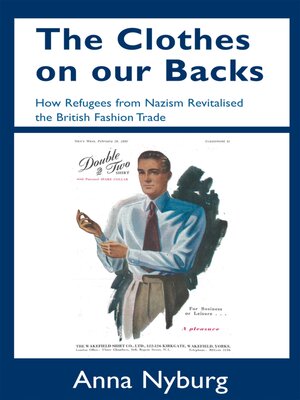The Clothes on our Backs
ebook ∣ How Refugees from Nazism Revitalised the British Fashion Trade
By Anna Nyburg

Sign up to save your library
With an OverDrive account, you can save your favorite libraries for at-a-glance information about availability. Find out more about OverDrive accounts.
Find this title in Libby, the library reading app by OverDrive.



Search for a digital library with this title
Title found at these libraries:
| Library Name | Distance |
|---|---|
| Loading... |
Jews had long been active in the clothing trade in Europe, developing new production and retail methods and excelling as designers. What happened to these Jews in the clothing industry after the Nazis came to power in 1933? Many found asylum in Britain, where soon the refugee owners of Kangol and other firms were employing thousands of British workers at a time of dreadfully high unemployment. When war broke out, it was Kangol who made the berets for the British army and other forces. British companies started to recognise what the refugees could offer: Pringle of Scotland for one could see the benefits of hiring an Austrian refugee designer, their first. The refugees brought new technology, new display methods, a different attitude to export, and much more. It was no wonder then that by the end of the war the refugee clothiers were recognised as having made a disproportionate contribution to the economy. Here Anna Nyburg tells their stories.







